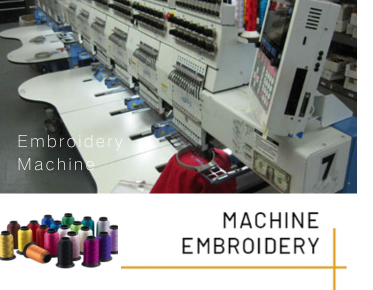What Makes an Image Too Complex for Embroidery?
Embroidery is a beautiful art form that transforms images into intricate stitch patterns. However, not all images are suitable for embroidery, and some can be too complex to translate effectively into this medium. Understanding what makes an image too complex for embroidery is crucial for anyone looking to create embroidered designs, whether for personal projects or commercial purposes.
Understanding the Basics of Embroidery Digitizing
Embroidery digitizing is the process of converting artwork into a stitch file that can be read by an embroidery machine. This process involves using specialized software to map out the path of the needle, determining stitch types, directions, and densities. The goal is to create a design that can be efficiently and accurately reproduced by the embroidery machine.
Factors Contributing to Complexity
Several factors can contribute to the complexity of an image when it comes to embroidery. These include the level of detail, color gradients, and the size of the design. Images with intricate details, such as fine lines or small text, can be challenging to reproduce accurately. Similarly, designs with subtle color gradients may not translate well, as embroidery relies on distinct thread colors rather than blending.
Detail and Size Considerations
One of the primary challenges in embroidery is dealing with images that have a high level of detail. Fine lines and small elements can become lost or muddled when translated into stitches. Additionally, the size of the design plays a significant role. Larger designs can accommodate more detail, while smaller designs may require simplification to ensure clarity and readability.
Color Limitations
Embroidery is limited by the number of thread colors available and the ability to blend these colors. Unlike digital images, which can display millions of colors, embroidery is constrained to the colors of the threads used. This limitation can make it difficult to reproduce images with complex color gradients or subtle shading.
Technical Constraints of Embroidery Machines
Embroidery machines have technical limitations that can affect the complexity of a design. For instance, machines have a maximum stitch count they can handle, and exceeding this can lead to issues such as thread breakage or machine malfunction. Additionally, the type of fabric being embroidered can impact the design's complexity, as some fabrics are more challenging to work with than others.
Choosing the Right Image for Embroidery
When selecting an image for embroidery, it's essential to consider these factors and choose designs that are well-suited to the medium. Simplifying complex images by reducing detail, limiting color palettes, and considering the size and fabric can help create a successful embroidery design. Working with experienced embroidery digitizing services can also ensure that your design is optimized for the best possible outcome.
The Role of Professional Digitizing Services
Professional digitizing services, like those offered by Eagle Digitizing, play a crucial role in transforming complex images into embroidery-ready designs. These services utilize skilled digitizers who understand the intricacies of embroidery and can adjust designs to meet the technical requirements of embroidery machines. They can also provide valuable insights into simplifying designs without losing their essence.
Benefits of Using Professional Services
Using a professional service ensures that your design is digitized with precision and care. These services often offer quick turnaround times and revisions to ensure customer satisfaction. By leveraging their expertise, you can avoid common pitfalls associated with complex designs and achieve a high-quality embroidered product.
Conclusion: Balancing Complexity and Simplicity
While complex images can pose challenges for embroidery, understanding the limitations and working with skilled professionals can help overcome these obstacles. By balancing complexity with simplicity, you can create stunning embroidered designs that capture the essence of the original image while being technically feasible. As technology advances, the possibilities for embroidery continue to expand, offering exciting opportunities for creativity and innovation in the field.



.png)